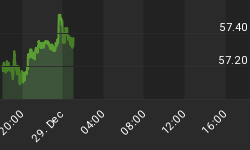Gamers are spending billions on NFTs in a speculative craze that combines video-gaming entertainment with the crypto world in a trend that shows no sign of letting up.
NFTs (non-fungible tokens) are unique cryptocurrency tokens used to represent assets such as digital art, sport, movies or music, and while they have been most recently headlining the space in terms of “collectors” buying exclusive rights to digital art, video and music, the gaming industry has a different use for them: A new phenomenon called “play to earn”.
According to market tracker DappRadar, users spent nearly $5 billion on NFTs in games last year, with gaming NFTs racking up $484 million in sales so far in 2022
Investors are also increasing their interest in NFT-based games, with such games attracting $4 billion in venture capital funding last year, compared to $80,000 in 2020.
Considering that there are 3 billion gamers worldwide and that NFT gaming is one of this year’s major new trends in the NFT world, it will become hard for mainstream developers and publishers to ignore.
One of the top NFT games on the market is Axie Infinity, where players can buy NFT characters that can help them win wars and score points to earn money. They can also create their own NFT characters for the game and earn money by hawking them on the NFT marketplace.
Axie is a monster-breeding game in which users raise a pet Axie and breed it with a genetic twist that keeps people interested. It’s the rare “breeds” that earn players money. All Axies are registered on the blockchain, which is how they earn money for being rare. They can’t be duplicated.
This is still early days for NFT gaming, but a lineup of early entrants and all the cash piling into this suggests that it could be rewarding for investors.
When the top players in the gaming industry jump on board, then we know this is all moving to the blockchain and that NFTs will gain much more market share in this industry.
SEGA, a Japanese multinational video game company, recently announced that it might expand into the NFT sphere.
“Gaming has a history of expansion through the connection of various cultures and technologies… It is a natural extension for the future of gaming that it will expand to involve new areas such as cloud gaming and NFTs,” SEGA producer Masayoshi Kikuchi told videogameschronicle.com.
However, much like cryptocurrency, NFT games are risky and unpredictable as well. Crypto games can offer users the possibility of considerable rewards but also major risks. Nor is NFT gaming immune to theft, as Axie Infinity users recently learned.
Last month, Axie Infinity owner Sky Mavis suffered a breach and lost over $620 million in Ethereum.
Also last month, F1 Delta Time, an official NFT and crypto-powered racing game launched in 2019 to much fanfare, was forced to shut down. The game collapsed because an officially licensed Formula 1 game had lost its license leaving players with expensive NFTs that were rendered worthless.
Before its demise, the game had seen the biggest-value sale of an NFT in 2019, with a jewel-decorated car selling for an Ethereum value over $100,000. That’s nothing compared to price tags for some other non-gaming NFT products, but it’s indicative of where gaming is headed.
Last year, NFT popularity skyrocketed with multimillion-dollar sales, major brands and a lineup of celebrities, including former first lady Melania Trump. Hollywood stars, sports celebrities and big brands like Coca-Cola, Gucci, Nike, and Adidas, all dipped their toes in the space.
The most valuable NFT sale last year was a digital collage called “The First 5,000 Days” by artist Mike Winkelmann (aka “Beeple”) for $69 million. Another Beeple piece, “Human One,” went for $29 million.
The NFT market has now surpassed $41 billion, after tripling from 2019 to 2020.
In the last couple of months, several major tech companies such as Facebook, Instagram, Reddit and others have said they were exploring the NFT market possibilities.

















